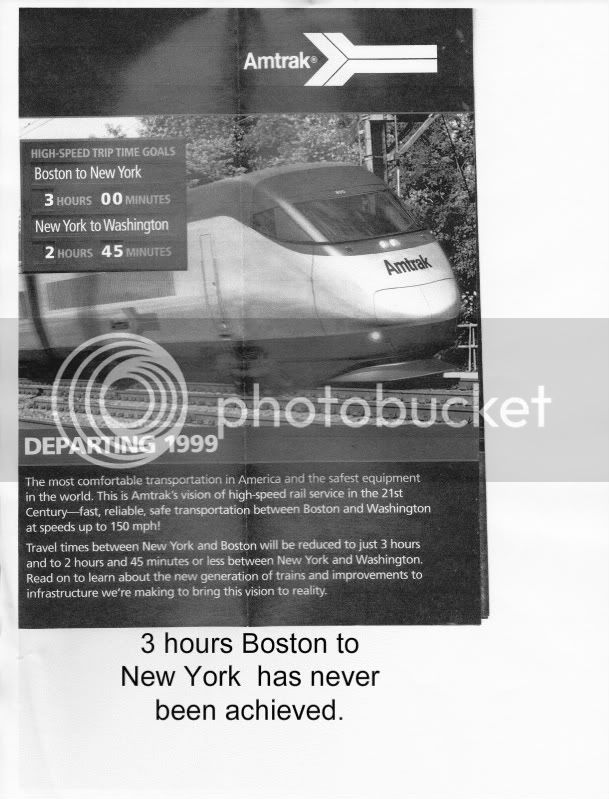NE933
Conductor
Probably can, if you floor it and let it fly at it's true maximum of 150mph, and that might be straining.An AEM-7 with 6 coaches and an engineer with extensive and intimate knowledge of the territory( a rarity of late) can accomplish the same running time as the Acela with all it's bells and whistles.
If I can inject some peace in this, Acela the project, true, did fail to make 3 hrs. Boston to NY. But there are some caviats, some points to be remembered: one being that my very first trip on one we made Boston to NY in 3:15 (it was New Years' Eve so the tracks were almost empty), pretty good compared to 3:35 usual running times. Yes it's not 3:00, but you must contemplate the work that a 3:00 running time required and is only now starting to bear fruit, like the Connecticut bridge replacement, and the God-awful Metro North catenary and track renewal. The slowness of MetroNorth's replacement of catenary with constant tension has rightfully caused many here to believe they are doing the slowness on purpose, probably to penalize Amtrak for perception of not paying enough, or supposedly for their way of handling projects in tandem with MetroNorth. The Shell flyover, which later got changed to just plain Shell interlocking renewal, did not go over well. Similarly, Amtrak itself has not redone any of its catenary south of NYC into constant tension, save the test section at Princeton Jct., NJ, so trains are slower than they should be. Who to lay blame for lack of money (Iraq? Long distance trains? Congress? the polka dotted snail of Zog?) shall be in the realms of debates that have surface on AU before, and in the future.
So, Guest and Ryan and everyone else, the Acela turned out to be a pretty good train, albeit one that needs plenty of babying to stay running, but it needed lots of modifications after some scary moments (cracked trucks and brake rotors), and of course it would take the curves faster at a higher cant deficiency if them extra 4 inches were not there. In otherwords, the shortcomings of Acela has less to do with Acela and more to do with the origins of how the trains were designed and built. Hopefully with this next go around, we will have taken each of these and learned to avoid them in the new design.
If all the old bridges in Connecticut and at Harold Interlocking were replaced, and if MetroNorth got it's projects finished, and gave Amtrak a clear railroad, I am certain an Acela can make NY - Boston in 3:05. And really, Guest, you can't frown on a deviation from plan that is only five minutes.
Last edited by a moderator:





